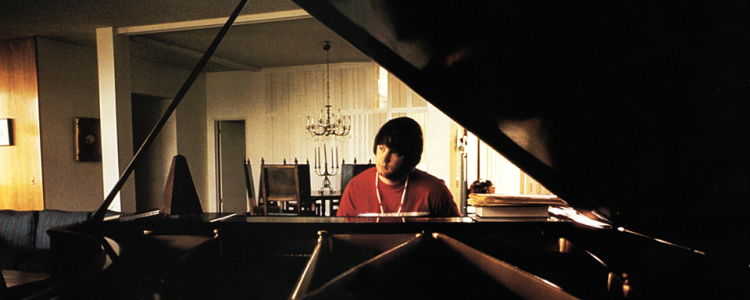This summer, I’m going to make playlists and write about them. Here is the seventh entry about a series of tracks of I’m calling “Lovestuck.” If you’d like to read the posts in order of how the songs appear on the playlist, start here. Hope you enjoy.
“Walk On By,” The Beach Boys

Usually a song about heartbreak towards the end of a playlist means something wistful and sad; today it doesn’t. I’m just tickled by this arrangement. And from the rollicking doom of “Sunny Afternoon” to the Lennon-esque bask of our next song, the Beach Boys cover of this little Burt Bacharach number—made famous, of course, by Dionne Warwick and later Isaac Hayes—acts as a musical bridge. Against its more chart-topping counterpart, this originally unreleased Beach Boys version is significantly slower and less crisp, missing not only a majority of the lyrics of the original song but a lot of the pride, too. While Ms. Dionne seems to dismiss her pain with a veil of commanding elegance, Brian Wilson’s falsetto reads more like an erasure poem about despair.
This morning, I kept listening to the two versions back to back, trying to figure out what exactly is so off. It’s not just the harmonies on the beautiful, bleeding edge of dissonant, as usual with Wilson’s ear. It’s not just the syrupy tempo, either. Then I found a possible answer: the piano is out of tune. Or at least not tuned according to the traditional A-above-middle-C. After doing some digging, I found some very interesting speculation: according to a couple different message boards, Wilson had his piano tuned strangely on purpose around the time the Beach Boys were recording 1967’s Smiley Smile. No one could confirm this, but the general story, which allegedly comes from Brian’s ex-wife Marilyn, is that Brian asked a piano tuner to come over and adjust the piano according to his own hummed pitches. Many are skeptical that this is even musically possible, but there is no doubt that the scales are a bit sideways in “Walk on By,” as well as on Wild Honey‘s “Let the Wind Blow” and “Country Air,” also recorded in 1967.
This reverbed, off-tune sound pierces me to the bone. Growing up we had an old upright in our house that all the kids were too impatient to practice and thus never formally learned. On summer days, though, I liked to play with it purely as a noise machine. I didn’t care that it was out of tune. I probably had no idea. I liked to loosen the reverb all the way and press my ear to the walnut, feeling the vibrations of each key. Then I would tap the mute pedal, delighting for a bit in the muffled clinks, only to dive back into the deep sea echo of notes bleeding together. As I got older, I taught myself songs by ear, practicing raw, fragile imitations of “Let It Be” and “Somewhere Over the Rainbow” until my brothers got annoyed. I bet there is a version of this off-key, experimental instrument in many households. I imagine it’s not just me for whom Wilson’s choice signifies the sweet, messy plunk of a home piano, playing for the sake of noise and nothing else. Read the message boards—just like me, people are mysteriously drawn to the sound.
My favorite measure is under the wash of that chorus of “cry.” The arpeggio is so gentle and simple relative to the blast of harmonics, like a kid coming into the dining room during a dinner party to see why all the adults are being so loud. With this sweet, slightly confused tone helping us along, we’ll soon hit the apex of this playlist with Angel Olsen’s “Spring.”
Join me in running your finger along the thread between past and present, between Wilson’s 1967 front room and Olsen’s 2019 masterpiece of a ballad, featuring a piano sound which Steffanee Wang at The Fader calls “gently warped.” Do you hear how, despite its imperfection, it carries the song?
